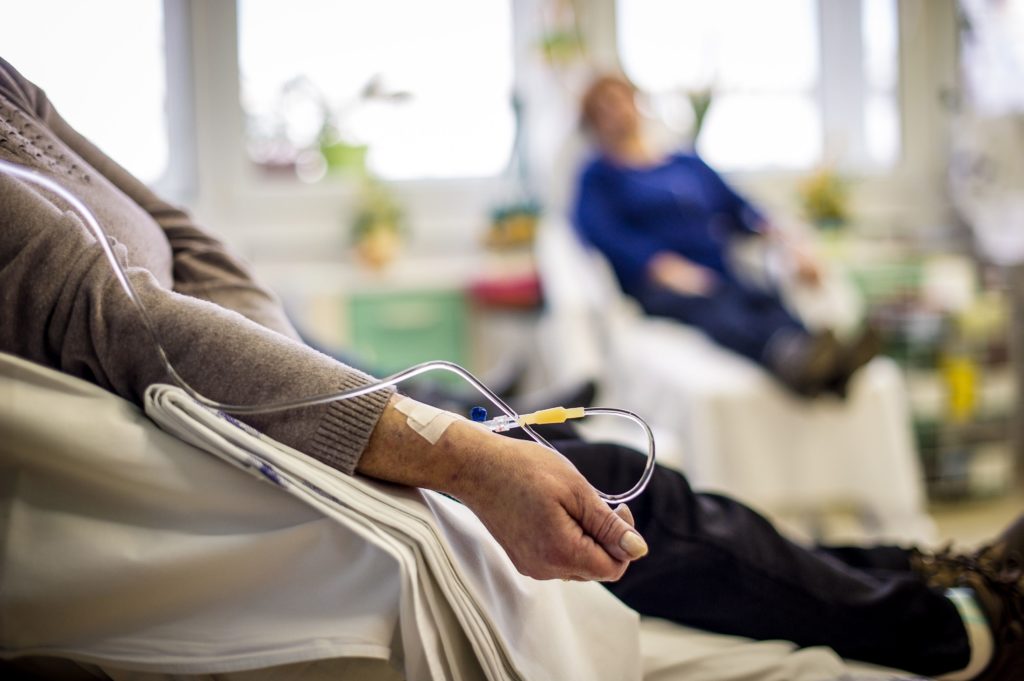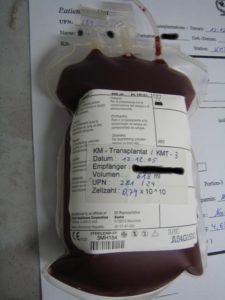
Recently Diagnosed or Relapsed? Stop Looking For a Miracle Cure, and Use Evidence-Based Therapies To Enhance Your Treatment and Prolong Your Remission
Multiple Myeloma an incurable disease, but I have spent the last 25 years in remission using a blend of conventional oncology and evidence-based nutrition, supplementation, and lifestyle therapies from peer-reviewed studies that your oncologist probably hasn't told you about.
Click the orange button to the right to learn more about what you can start doing today.
- You are here:
- Home »
- Blog »
- Multiple Myeloma »
- Advanced Multiple Myeloma-
Advanced Multiple Myeloma-

Cure vs control is debated because the strategies currently being tested are not truly curative but rather are intended to maximize response rates in the hope that they will translate into an operational cure for a subset of patients…”
Hi David- I was diagnosed with advanced multiple myeloma in October of 2020. I went through almost a year of induction therapy.
My M protein started at 8.9 and I had 90% monoclonal proteins (MM) in my blood, I underwent an autologous bone marrow transplant in Oct of 2021 when they couldn’t get my plasma cells under 22% of my bone marrow.
It was a “successful” transplant when I reached 0% plasma cells in my marrow and an M protein at .2.
I have had no symptoms from the beginning and continue to feel well. My Immunoglobulins are now going up already and my M protein is at .9.
I was on 10mg of Revlimid as my maintenance therapy and now my oncologist increased the dose to 15mg.
So… I will be getting my blood work done Oct. 20th and will see my Oncologist on Oct. 27th and am wondering if you have any insight on what I should ask, I will be 60 years old in November. Male. Thank You, Sam
Hi Sam-
- almost 12 months of induction therapy,
- an autologous stem cell transplant followed by
- maintenance therapy,
David Emerson
Recommended Reading:
Treatment of Myeloma: Cure vs Control
“Although not often openly acknowledged, “cure vs control” is the dominant philosophical difference behind many of the strategies, trials, and debates related to the management of myeloma. Should we treat patients (especially advanced multiple myeloma) with myeloma with multidrug, multitransplant combinations with the goal of potentially curing a subset of patients, recognizing that the risk of adverse events and effect on quality of life will be substantial? Or should we address myeloma as a chronic incurable condition with the goal of disease control, using the least toxic regimens, emphasizing a balance between efficacy and quality of life, and reserving more aggressive therapy for later?
To be sure, if cure were known to be possible (with a reasonable probability) in myeloma, it would undoubtedly be the preferred therapeutic goal of most patients and physicians. But this is not the case. Myeloma is generally not considered a curable disease; however, new definitions of cure have been suggested, including operational cure, which is defined as a sustained complete response (CR) for a prolonged period.1,2 Cure vs control is debated because the strategies currently being tested are not truly curative but rather are intended to maximize response rates in the hope that they will translate into an operational cure for a subset of patients…”
No Association Between Response Rates and Survival in Newly Diagnosed Multiple Myeloma
“There was no association between conventional response outcomes, such as CR or VGPR, and survival in patients with newly diagnosed multiple myeloma, according to the results of a meta-regression analysis published recently in the European Journal of Hematology…
“We explored the relationship between response to initial treatment and survival in patients with newly diagnosed multiple myeloma, based on data from 63 randomized clinical trials”…
“Meta-regression analyses failed to demonstrate any association between CR or VGPR with either overall survival or progression-free survival both in patients receiving autologous stem cell transplant [ASCT] and in non-ASCT patients.”
Should Myeloma Patients Panic If They Do Not Achieve A Complete Response?
“Of course, the cause of my worry is not that patients have not achieved the magical CR or minimal residual disease-negative status, but at how misinterpretation of data can lead to needless concern, unnecessary chemotherapy increased side effects and cost of care, and even harm…
In newly diagnosed patients treated with induction, stem cell transplantation, and Revlimid maintenance therapy, the proportion of patients who get to a complete response is approximately 30 percent. Does this mean that 70 percent of myeloma patients have “failed”?
Even with more expensive triplet induction regimens such as Revlimid, Velcade, and dexamethasone(Decadron) (abbreviated as RVD), only 40 percent of newly diagnosed myeloma patients achieve complete response. An aggressive seven-drug induction regimen followed by two back-to-back transplants, and three years of maintenance used in the “Total Therapy 3” regimen results in a complete response rate of 55 percent.
Should one-half of newly diagnosed myeloma patients panic that they have not reached a complete response? That would be over 10,000 worried patients each year in the United States alone. The short answer is no; absolutely not.
Multiple myeloma is a remarkably heterogeneous disease; the outcomes vary dramatically depending on the patient’s chromosomal abnormalities. The type of myeloma one patient has may be completely different than the myeloma another patient has; it may not even be the same disease…”


